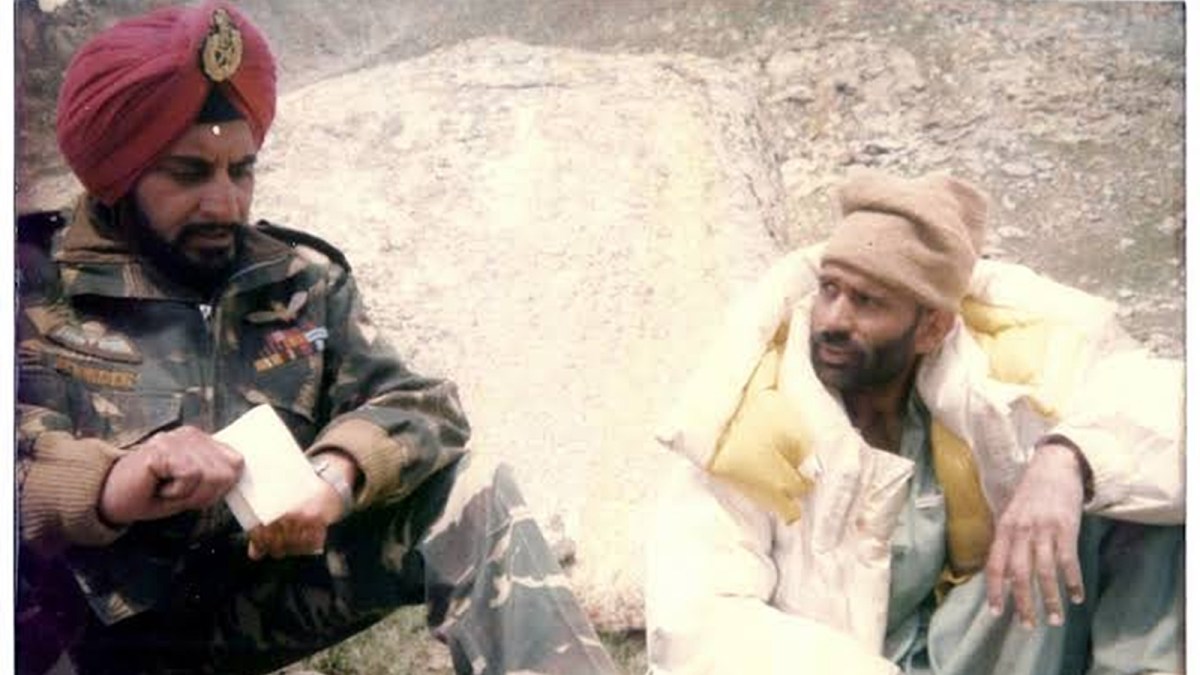Stay updated with the latest - Click here to follow us on Instagram
‘A lot of unanswered questions are still hanging fire’: Brigadier Devinder Singh, commander of the 70 Infantry Brigade during Kargil War
On the 25th anniversary of the conflict, Brigadier Devinder Singh reminisces about the battles that took place and their consequences.

Brigadier Devinder Singh commanded the 70 Infantry Brigade in the Batalik sector during the Kargil conflict. At one point, his brigade was as large as a division with 11 battalions under his command. On the 25th anniversary of the conflict, he reminisces about the battles that took place and their consequences.
In the Kargil conflict remembrances, there appears to be a mismatch between the actions that took place at Dras vis-à-vis those at Batalik. What is your opinion?
I went some days back to Dras and Batalik and came back via Leh. When I went to the Kargil War Memorial, my immediate feeling was that this was an 8 Mountain Division memorial and not a Kargil War Memorial. I wrote in the visitor’s book that if it is to be called the Kargil War Memorial, then the 70 Infantry Brigade’s actions should be shown distinctly. Meanwhile, in the Batalik sector, which is now handled by the 192 Mountain Brigade, I was horrified that it has become the Tiger Hill Brigade. The 70 Infantry Brigade is mentioned nowhere, even in Batalik now. In the Kargil War Memorial at Leh, there used to be sufficient representation of Batalik and the 70 Infantry Brigade until the area was under the 3 Infantry Division. But now, under the 14 Corps, the whole thing has become a Ladakh memorial, and the 70 Brigade is just represented as a memento displayed under a staircase. This is perhaps because of the narrative that came up after the war that the 3 Infantry Division was a bad division for having let the intrusions take place, and the 8 Division was a good division because it came from outside and evicted the enemy. But people forget that the 70 Brigade also came from outside with the 8 Division.
Did the heavy casualties inflicted on Frontier Force (FF) battalions of the Pakistan Army in the Batalik sector force Gen Musharraf to take a step back and agree to a ceasefire?
We had cleared Batalik of Pakistanis by July 5, and by July 9, we were sitting on the Line of Control (LoC). This was way before the evictions in the Dras sector. Once we reached the LoC, Pakistan thought we might cross it. They rushed two units—33 FF and 4 FF—from their 111 Brigade to the Batalik sector, and these are pure Punjabi Mussalman battalions. These units, to our horror, were preparing to carry out full-fledged attacks on our troops, who were, at the time, holding the heights in just penny pockets. We opened up our artillery fire on them, and 33 FF had almost 43 soldiers killed. These casualties sent a chilling effect on the Pakistan Army, who were until then using the Northern Light Infantry from their northern areas and were not bothered about their casualties. When these Punjabi casualties occurred, it must have played a vital role in their thinking, as the rest of Pakistan was not aware of the action taking place in Kargil until then. This, coupled with the meetings in the US, put pressure on him to step back.
The focus 25 years later appears to be on tactical level operations at the battalion level, and there is no discussion on the higher direction of war by the senior formation commanders. Why?
The complete narrative has been pegged at the battalion level. There is no denying that the battalions did a fantastic job, and we owe everything to them. That is not contestable for a moment. But whether there were positive actions during the war or negative actions prior to it as far as blame games on intrusions are concerned at the Division, Corps, Command, and Military Operations Directorate level, that no one talks about. In this war, there has been coverage of the tactical level and some at the strategic level of political leadership, non-escalation of war, nuclear management, etc. But nobody is talking about operational art, and that is what generalship is all about. This is the first war where the juniors have been victimized, and the seniors have been rewarded. That imbalance has not been challenged even today. This aberration will remain a negative point of this war.
Do you feel that the truth about Kargil is still not out 25 years later?
Certainly not. I have said this a number of times. The facts about the performance of battalions are guaranteed and cannot be argued. But above that, this whole thing is unconvincing. A common man on the street may be convinced, but I don’t think any man with any intellectual or military knowledge would be convinced that this was a clean-cut affair. Whereas you take the 1971 war. Fewer people were blamed, but the scale was 10 to 15 times bigger. Where was the need to blame so many people? Unless there is some other motive behind it. A lot of unanswered questions are still hanging fire 25 years later.